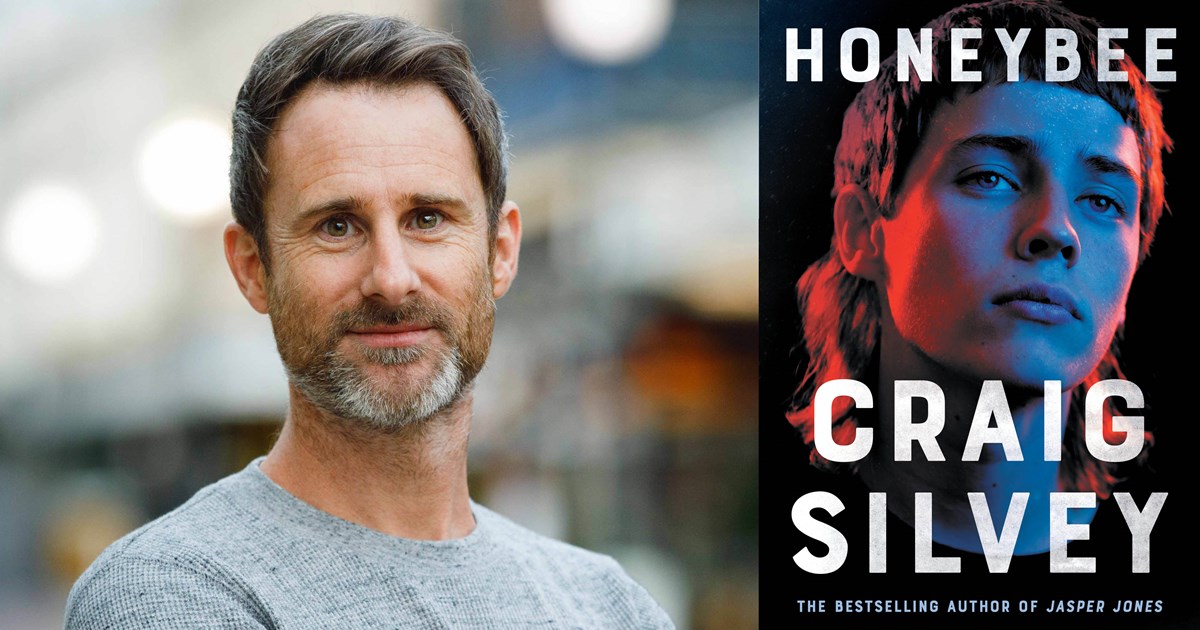Elena Perse: Honeybee is filled with a diverse cast of characters that draw you in to their tumultuous lives. Which came to you first, the characters or the plot of Honeybee?
Craig Silvey: That’s kind of you to say! Character has always been the vehicle through which I can explore and build narrative, so it generally comes first. Given that Honeybee’s roots are inspired by a real event, too, meant that the story was always going to have an intimate personal experience as its focus.
EP: What was your favourite scene to write and why?
CS: There’s a chapter in Honeybee that I’m very fond of called Cinderella which illustrates a sequence of drag performances at a bar called The Gavel. I’ve had great admiration for the art of drag for a long time, and it was a joy to pay tribute to the Perth drag scene and to design my own evening of extravagance, debauchery and mercurial talent.
EP: Was there anything that you read, watched or listened to as you wrote Honeybee that ended up influencing the novel?
CS: There are a few devastating scenes in Honeybee that required me to write from a place that matched that emotional energy. I’ve rarely employed this in the past, but not unlike an actor preparing for a difficult scene, I had to steep myself in sorrow and solemnity before writing, and music was my best access point. So there was a period of time where I essentially sat through a playlist of the saddest songs imaginable before working: lots of Tom Waits, Sufjan Stevens, Leonard Cohen, Johnny Cash, Antony and the Johnsons, Iron and Wine, Hozier, etc.
EP: How did you ensure that your portrayal of Sam’s story and struggles would be thoughtful and authentic?
CS: I’m acutely aware that Sam’s story is not my lived experience. It has always been very, very important to me that I write from a place of sensitivity and understanding when detailing stories that don’t emerge from my own history. In order to respectfully and authentically articulate Sam’s experience, my process was to listen. I read countless testimonies, watched video confessionals, connected with support networks like Transfolk of WA, and interviewed a number of trans people of various ages and backgrounds, all of whom were incredibly generous with their time and unequivocally enthusiastic about Honeybee. I owe a great debt to those trans and non-binary people courageous enough to share their stories in public forums, and especially to those who generously agreed to meet with me and answer my many questions and collaborate on the story. Honeybee is the result of a chorus of voices, through which a character and a narrative was shaped.
In telling Sam’s story, it’s not my intention to present a definitive account of being transgender. Such a task would be impossible, regardless of the author’s background – because if one clear truth emerged from my research and consultation, it’s that every experience is unique. This is Sam’s story, specific to her character, specific to a time and place and the domestic pressures she is under. Her emotional precariousness is influenced by a number of elements unique to her journey.
That said, when it comes to descriptions of Sam’s dysphoria or expressions of her identity, there is no invention, exaggeration or creative license on my part – every word is informed by research and reportage.
EP: Now that Honeybee has been out for a few months, what are you most proud of about the book and what have been some of your favourite responses to it?
CS: The response to Honeybee has been quite extraordinary. It’s proving to be quite an immersive read – I’m hearing from many people who have read the book in a single sitting. Above all, it’s a book that moves people. The emotional investment in Honeybee from readers has been incredible to see.
Most important to me has been the response from trans and gender diverse readers. I’ve heard from trans people of diverging ages, who have told me that they saw themselves in Honeybee’s pages, and that I’ve articulated an experience that they themselves have found difficult to describe. They have read Honeybee and felt emboldened enough to publicly come out and declare their true selves, to family and friends and on social media.
I spoke to one young trans man who is an aspiring writer – and he credits Honeybee for reassuring him that there is an appetite for trans narratives, and that, despite advice to the contrary, he can make that a point of focus for his writing.
I’ve heard from booksellers who have told me that customers are returning to the store after reading Honeybee and requesting more LGBTQI content, because they want to further their reading. And I’ve heard from many, many people who are outside the trans and gender diverse space who want to be better allies, who now are better equipped to understand the difficulties and pressures faced by trans people and want to offer their support.
So these responses, for me, more than any plaudit or award, represent the greatest reward for me.
EP: What other books would you recommend to someone who loved Honeybee?
CS: I’ve heard readers consistently compare Honeybee favourably to A Little Life by Hanya Yanagihara, and also Shuggie Bain by Douglas Stewart. Unfortunately, I haven’t read either yet, so I can’t confirm or deny that.
Personally, I’d point people towards some fantastic trans and gender diverse authors. Pet by Akwaeke Emezi was brilliant. I’ve always been a huge fan of Kae Tempest. Jackson Bird’s memoir Sorted was very good. And look out for Yves Rees’ memoir All About Yves: Notes from a Transition later this year.
Craig Silvey interviewed by Elena Perse
Image courtesy of Perth Festival

